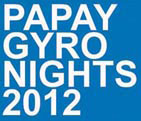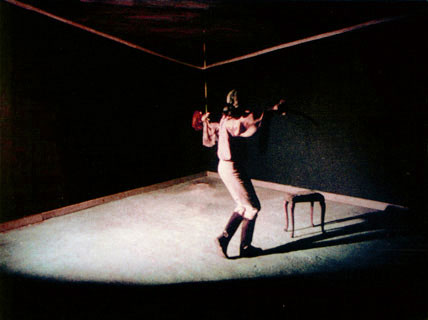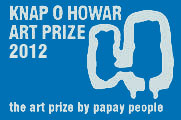| |
| |
 |
|
 |
 |
L'ANGE
/ THE ANGEL
1982 / 16 mm / coul / son / 70' 00
Music: Michèle BOKANOWSKI |
| |
THE
STORY OF THE FILM
The climbing of an immense staircase made up of the most varied
stairs.
Symbolic
scenes occur on different levels where (the) characters seem
to be prisoners of their deeds and of their own folly.
Attacks,
explosions, maniacal and despairing searching, objects which
independently move, walls, floors and ceilings which form and
disperse ;
The
steep staircase leads little by little towards the zones of
great light where human beings and nonhuman beings meet. |
| |
NOTES
ON THE PHOTOGRAPHY IN "THE ANGEL"
All the shooting was transformed by rneans of a rear projection
animation stand with different techniques adapted to each sequence.
These transformations concerned the colouring and substance
of the picture (texture, granulation, graduation) and the construction
(perspective modified within each frame).
In addition to these standard special effects, (that is to say
the introduction of models, the inclusion and transfer of objects,
the acceleration and reduction of speed, and the inversion of
sequences) more specific processes were applied : the use of
special optical lenses, the superimposition of still and mobile
elements creating different sensations of space, the control,
frame by frame, of the rhythms aûd movernents of the characters.
Sorne of the special effects were created during the actual
shooting, whereas the sets were built with a view to the transformations
they would subsequently undergo.
The construction of the set and the filming (actors, models
and stop-motions process) were carried out one a period of two
years ; the special effects and editing took three years to
complete. |
| |
MICHELE
BOKANOWSKI'S MUSIC
Less than ever, the usual term "soundtrack" cannot
be applied to the original music composed by Michèle
BOKANOWSKI for "L'ANGE", the music which alone makes
up the sound world of this film without "dialogues »
and without "sound effects" in the traditional sense.
For this music is never a commentary, it can never be placed
in a conventionally delimited part of the film, but is an integral
part of its space, its pulsation, its song.
For her work on "L' ANGE », Michèle BOKANOWSKI
thought immediately of a string quartet, but a quartet she would
recompose. She had solists (Regis PASQUIER, Philippe MULLER,
Philippe DROGOZ) record partitions and separate musical elements,
each one carefully worked out, and she subsequently recomposed,
manipulated and assembled them on tape in her personal studio
with her usual perfectionism and her sense of full, dense harmony.
In Michèle BOKANOWSKI's music - in her concert works
as well as in her film compositions - there has always been
a pursuit of chamber music color. She succeeds in creating a
form of distillation and sublimation of musical tone, a nucleus
of intimacy from which expression diffuses, radiating into a
vaster dimension than any orchestra could produce.
Human and cosmic, like a bridge connecting the inside space
of the body and the memory to the violent perspectives of the
outside space which make up Patrick BOKANOWSKI’s world,
this music defies all traditional laws for film music and represents
one of the most surprising adventures in marrying sound and
vision.
Michel
CHION |
| |
|
Selected by the Critics' Week at Cannes 1982, Grand Jury Prize
and the Prix de la SACEM 10th Festival of Besançon and
Experimental Film Award at the 4th Festival of Grenoble in 1982. |
| |
|
 |
DÉJEUNER
DU MATIN
1974 / 16 mm / coul / son / 12' 00
Music:
Michèle BOKANOWSKI |
| |
| Incorporating
painterly, Friedrich-like rural landscapes set against expressionistic
images of elongated shadows, skeletal structures and highly
acute camera angles that distort perpective fields of view,
« Déjeuner du matin » subverts conventional
notions of family and domestic ritual to create a haunted portrait
of isolation and Sisyphean ritual. |
| |
| Prix
au Festival de Grenoble (1974) |
| |
|
 |
LA
FEMME QUI SE POUDRE.
1970-1972 / 16 mm / n&b / son / 18' 00
Music: Michèle BOKANOWSKI |
| |
| Patrick
Bokanowski, the “ artist-alchemist of celluloid”, employs
an extraordinary range of technical inventions – combining live-action
with optical experiments, drawing, performance, painting and animation-
to conjure magical forays into a parallel universe: moving from dread
and terror in the early shorts, via bursts of zany humour, to sublime
serenity in the landscape films and joyous kinetic energy in his most
recent work |
| |
| Prix
du Festival de Toulon |
| |
“Magisterial
images seething in the amber of transcendent soundscapes. Drink in
these films through eyes and ears”
Brother Quay |
| |
Patrick
Bokanowski. French filmmaker and artist developed a manner
of treating filmic materiel that crosses over traditional boundaries
of film genre : short film, experimental cinema and animation. His
work lies on the edge between optical and plastic art, in a «
gap » of constant reinvention. Patrick BOKANOWSKI challenges
the idea that cinema must, essentiallly, reproduce reality, our everyday
thoughts and feelings. His films contradict the photographic «
objectivity » that is firmly tied to the essence of film production
the world over. Bokanowski’s experiments attempt to open the
art of film up to other possibilities of expression, for example by
« warping » his camera lens (he prefers the term «
subjective » to « objective » - the French word
for « lens »), thus testifying to a purely mental vision,
unconcerned with film’s conventional representations, thus affecting
and metamorphosing reality, and thereby offering to the viewer of
his films new adventures in perception.
Pierre
Coulibeuf |
| |
|
www.lightcone.org |
| |
| 16MM |
| |
 |
|
|





